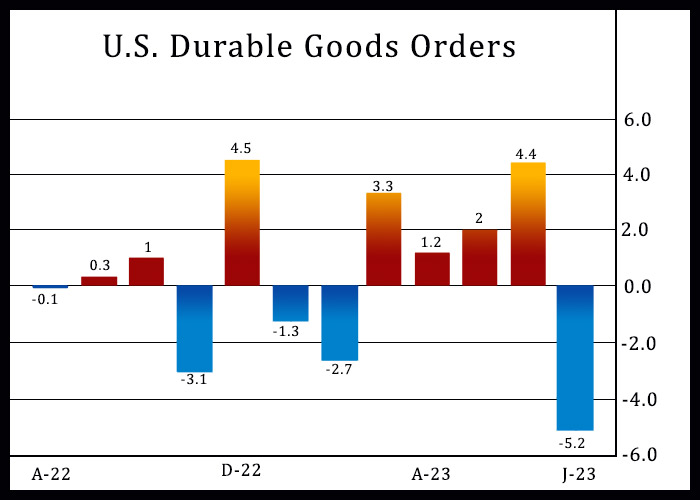With aircraft demand pulling back sharply following recent strength, the Commerce Department released a report on Thursday showing new orders for U.S. manufactured durable goods tumbled by more than expected in the month of July.
The Commerce Department said durable goods orders plunged by 5.2 percent in July after surging by a revised 4.4 percent in June.
Economists had expected durable goods orders to slump by 4.0 percent compared to the 4.6 percent jump that had been reported for the previous month.
The sharp pullback in durable goods orders came as orders for transportation equipment plummeted by 14.3 percent in July after spiking by 11.9 percent in June.
Orders for non-defense aircraft and parts led the way lower, showing a 43.6 percent nosedive in July after soaring by 71.1 percent in June.
Excluding the pullback in orders for transportation equipment, durable goods orders rose by 0.5 percent in July after inching up by 0.2 percent in June. Ex-transportation orders were expected to edge up by 0.2 percent.
The increase in ex-transportation orders partly reflected strong growth in orders for machinery and electrical equipment, appliances and components.
The report also said orders for non-defense capital goods excluding aircraft, a key indicator of business spending, inched up by 0.1 percent in July after falling by 0.4 percent in June.
Meanwhile, shipments in the same category, which is the source data for equipment investment in GDP, slipped by 0.2 percent in July after edging down by 0.1 percent in June.
“While it’s proving to take longer than expected, we maintain our conviction that weaker goods demand, tighter lending standards and elevated interest rates will cause durable goods orders and shipments to deteriorate,” said Oren Klachkin, Lead U.S. Economist at Oxford Economics.
He added, “The fundamental backdrop signals that durable goods activity will weaken, especially when the anticipated mild recession hits near the end of the year.”
Source: Read Full Article
